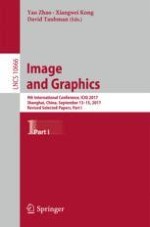2017 | Buch
Image and Graphics
9th International Conference, ICIG 2017, Shanghai, China, September 13-15, 2017, Revised Selected Papers, Part I
herausgegeben von: Yao Zhao, Xiangwei Kong, David Taubman
Verlag: Springer International Publishing
Buchreihe : Lecture Notes in Computer Science
